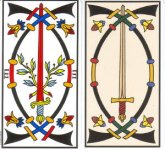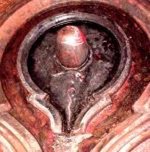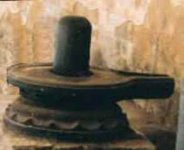Moongold said:
Kwaw, your astrological model seems a little bit off the wall to me but I have not seen it its entirety so reserve judgment on that one.
It is an alternative model that I am currently experimenting with, some of it fits nicely, some of it doesn't and I am reserving judgement myself upon how useful or not it may be.
Playing around with the old style square format horoscope, and linking the four suits with four directions rather than four elements:
The pips 2-10 of each suit gives a naturally
dintinctive set of 36 cards which would seem to me would naturally be
applied to the 36 decans [if indeed they were]. Why two to ten?
Because technically speaking 'number' is plural and 'one' as such
being singular is not a number. While many people nowadays are
perhaps unfamiliar or unaware of this distinction it was commonly
applied pre-1800s [Nicholas of Cusa makes heavy use of this
distinction in his philophical/theological speculations]. Also, unlike the other pip cards, the aces are usually without a number, and are also distinguished from the others in that they may be considered as high or low. As to how
they may have thought of corresponding these 36 cards to the decans
we are all familiar with the elemental attributions; however another
way may have been directional. Remembering that a square format
horoscope was more commonly used than the round one we are more
familiar with these days, I am picturing the 36 cards in a square
[with the aces perhaps denoting the four cardinal points ascendant,
mc, descendant and nadir]. Along each side would be one suit 2-10.
The manner in which we choose to attribute the suits to the
directions is debatable, but for example lets say wands is easterly,
therefore they are laid down the eastern [left side] of the square
and correspond to the 9 decans Pisces to Taurus; and so on with the
rest.
As for the court cards:
Draw a square. Mark four points, marking the middle of each line of
the square. Using these as marking the corners draw another square
inside the other. Draw two diagonal lines, corner to corner of the
outer square. Use the points where the diagonals cross the midpoints
of the second square as the corners of another inner square. You now
have a square shape with sixteen internal triangular segments. This
is the basis for the square format horoscope, in which the four
central triangular segments are usually blanked out to form an inner
square to contain four items of information, name, date, time and
place of birth.
The central point event, the birth or child, infers the Mother;
therefore I am imagining the four Queens in the central triangular
segments; kings in cardinal segments, knights in fixed and pages in
mutable. As I said Wands east [the Ace of Wands with its trunk like
wand resting on the ground and sprouting suggestive of spring, aries,
cardinal east], swords west [autumn, the dying sun [scythe, bladed
weapon] the cutting of the harvest]; Cups North Cancer; Pentacles
South Capricorn.
So in order 2-10 [2, 3and 4 mutable signs, 5, 6 and 7 cardinal signs, 8, 9 and 10 kerubic signs]:
Easterly - Batons - Pisces, Aries and Taurus
Southerly - Deniers - Sagittarius, Capricorn and Aquarius
Westerly - Swords - Virgo, Libra and Scorpio
Northerly - Cups - Gemini, Cancer and Leo.
Kwaw




